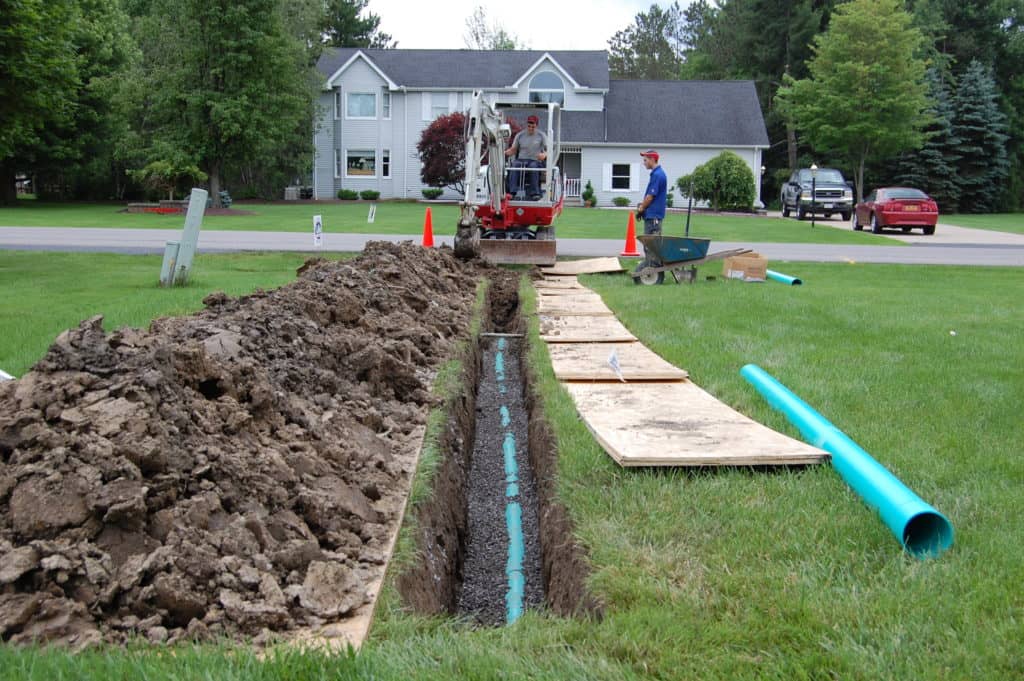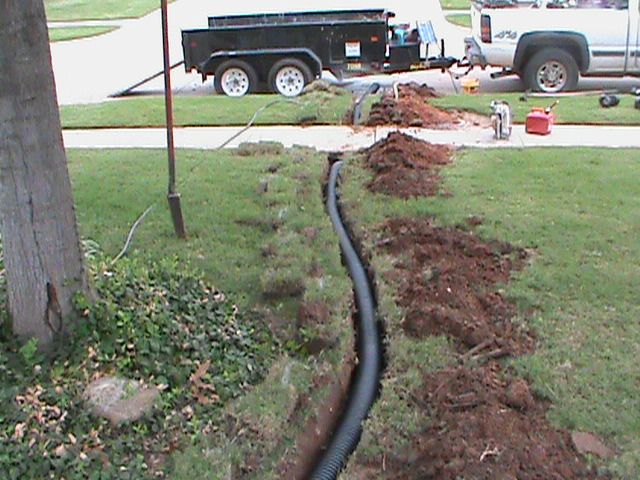Best Drainage Solutions for Waterlogged Gardens: Protecting Your Plants
A waterlogged garden can cause numerous problems for plants, from root rot to stunted growth. When water doesn’t drain properly, it deprives plant roots of essential oxygen and disrupts nutrient uptake. Thankfully, several garden drainage solutions can alleviate waterlogging issues and protect your plants. Here are some of the best techniques to create a well-drained garden, keeping your plants healthy and thriving.
1. French Drains: Directing Water Away from Plants
A French drain is an effective solution for gardens where water collects in low-lying areas. This simple drainage system consists of a gravel-filled trench with a perforated pipe that redirects water away from garden beds, keeping plant roots safe from excess moisture.
Benefits:
- Redirects water efficiently and keeps problem areas dry.
- Prevents water from pooling around plants.
- Relatively easy to install and effective in various soil types.
How to do it:
- Dig a trench in the area where water accumulates.
- Line it with landscape fabric, add a perforated pipe, and cover it with gravel.
- Ensure the trench slopes slightly downward to allow water to flow away from the plants.
2. Raised Garden Beds: Lifting Plants Above Waterlogged Soil
Raised garden beds are ideal for gardens with poor drainage or heavy clay soil that retains moisture. By elevating the soil, raised beds provide better airflow and water drainage, which is essential for protecting plant roots from waterlogging.
Benefits:
- Keeps roots above waterlogged areas and provides better control over soil composition.
- Helps prevent root rot and other issues related to poor drainage.
- Allows for a deeper, well-draining soil mix tailored to your plants.
How to do it:
- Build a raised garden bed using materials like wood, bricks, or recycled plastic.
- Fill the bed with a well-draining soil mix that includes organic matter and coarse sand.
- Aim for a height of at least 6–12 inches to ensure sufficient drainage and space for roots.
3. Swales: Natural Water Redirecting Channels
Swales are shallow, gently sloped trenches that help manage water runoff in your garden. They capture excess water and slowly release it into the soil, redirecting water flow away from areas where plants could be damaged by too much moisture.
Benefits:
- A natural, eco-friendly way to manage excess water.
- Reduces soil erosion and helps improve soil moisture distribution.
- Enhances water absorption in areas that need it.
How to do it:
- Dig a shallow trench in areas where water naturally collects.
- Line the swale with gravel or stones and plant grass or native plants to stabilize the soil.
- Position the swale so it directs water away from sensitive garden areas.
4. Install Soakaways: A Deep Solution for Persistent Waterlogging
A soakaway is an underground pit filled with stones or crates that collects and disperses water into the surrounding soil. Soakaways are particularly helpful for gardens with heavy clay soil, as they provide an area where excess water can drain and gradually be absorbed by the ground.
Benefits:
- Absorbs and disperses excess water effectively, preventing pooling.
- Helps improve overall drainage in areas with heavy, compacted soil.
- Requires minimal maintenance once installed.
How to do it:
- Dig a large hole, at least 1 meter deep, in an area away from plants.
- Fill the pit with stones or permeable crates.
- Cover with a layer of soil and turf to blend with the landscape.
5. Aerating the Soil: Improve Soil Structure for Better Drainage
If waterlogging is mild or isolated to specific areas, aerating the soil can help improve drainage by creating small channels for water to escape. Aeration is especially beneficial for compacted soils, which often struggle to drain properly.
Benefits:
- Loosens compacted soil, allowing better water and air penetration.
- Simple and cost-effective solution for smaller drainage issues.
- Boosts root growth and overall plant health by improving soil aeration.
How to do it:
- Use a garden fork or a mechanical aerator to poke holes into the soil at regular intervals.
- Work compost or coarse sand into the soil to further improve drainage.
- Repeat every season to keep the soil loose and well-drained.
6. Add Organic Matter: Enhance Soil Structure Naturally
Amending your garden soil with organic matter like compost or well-rotted manure improves its structure, making it more porous and capable of absorbing water. Organic material breaks up compacted soil and increases its ability to drain efficiently, which is particularly helpful in heavy clay soils.
Benefits:
- Improves soil texture, allowing for better water drainage and aeration.
- Boosts nutrient content, supporting healthy plant growth.
- Simple, natural solution that can be done seasonally.
How to do it:
- Spread a 2-3 inch layer of compost, aged manure, or leaf mold over the soil surface.
- Use a garden fork to mix the organic matter into the top 6 inches of soil.
- Repeat annually to maintain a loose, well-drained soil structure.

7. Use Mulch to Control Moisture
Mulch helps retain moisture in dry periods but can also aid drainage by preventing soil compaction and reducing water runoff. Organic mulches, like wood chips or bark, break down over time, enhancing soil structure and its ability to drain water effectively.
Benefits:
- Regulates soil moisture, reducing waterlogging risk.
- Prevents surface water runoff and erosion.
- Adds organic matter to the soil as it decomposes.
How to do it:
- Apply a 2-3 inch layer of mulch around your plants, keeping it a few inches away from plant stems.
- Reapply mulch as needed, especially after heavy rains, to keep your soil healthy and well-drained.
8. Plant Water-Tolerant Species in Problem Areas
If certain areas in your garden are persistently waterlogged, consider planting water-tolerant plants that can thrive in wetter conditions. These plants can tolerate, or even prefer, moist soil, reducing the need to invest in extensive drainage solutions in these areas.
Benefits:
- Simple way to cope with wet areas without extensive modifications.
- Adds biodiversity and visual interest to your garden.
- Reduces the risk of plant loss due to excess moisture.
How to do it:
- Choose plants like ferns, ornamental grasses, iris, or swamp hibiscus that tolerate wet conditions.
- Group moisture-loving plants together in problem areas.
- Create a mixed border with water-tolerant plants to keep your garden visually cohesive.
9. Redirect Downspouts: Manage Roof Runoff
Excess rainwater from your roof can exacerbate garden waterlogging. Redirecting downspouts to a more suitable location, such as a rain garden or soakaway, can help keep water from flooding your garden beds.
Benefits:
- Prevents roof runoff from pooling around plants and garden beds.
- Protects your garden from becoming oversaturated.
- Inexpensive and quick to implement.
How to do it:
- Attach downspout extenders to divert water further away from your garden.
- Direct downspouts to rain gardens or areas where water won’t impact plants.
- Regularly check for blockages in gutters and downspouts to maintain effective flow.

